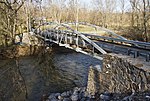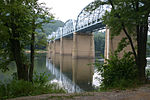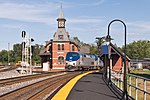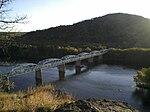Capital Airlines Flight 300
1958 in MarylandAccidents and incidents involving United States Air Force aircraftAccidents and incidents involving the Vickers ViscountAviation accidents and incidents in the United States in 1958May 1958 events in the United States ... and 3 more
Mid-air collisionsMid-air collisions involving airlinersMid-air collisions involving military aircraft

On May 20, 1958 a Vickers Viscount airliner operating Capital Airlines Flight 300 was involved in a mid-air collision with a United States Air Force T-33 jet trainer on a proficiency flight in the skies above Brunswick, Maryland. All 11 people on board the Viscount and one of the two crew in the T-33 were killed in the accident. Flight 300 was the second of four fatal crashes in under two years involving Capital Airlines Viscounts; the others were Flight 67 (April 1958), Flight 75 (May 1959), and Flight 20 (January 1960). An investigation of the accident concluded that the pilot in command of the T-33 failed to see and maintain a safe distance from other air traffic.
Excerpt from the Wikipedia article Capital Airlines Flight 300 (License: CC BY-SA 3.0, Authors, Images).Capital Airlines Flight 300
Fry Road,
Geographical coordinates (GPS) Address Nearby Places Show on map
Geographical coordinates (GPS)
| Latitude | Longitude |
|---|---|
| N 39.330555555556 ° | E -77.544166666667 ° |
Address
Fry Road
Fry Road
21755
Maryland, United States
Open on Google Maps










